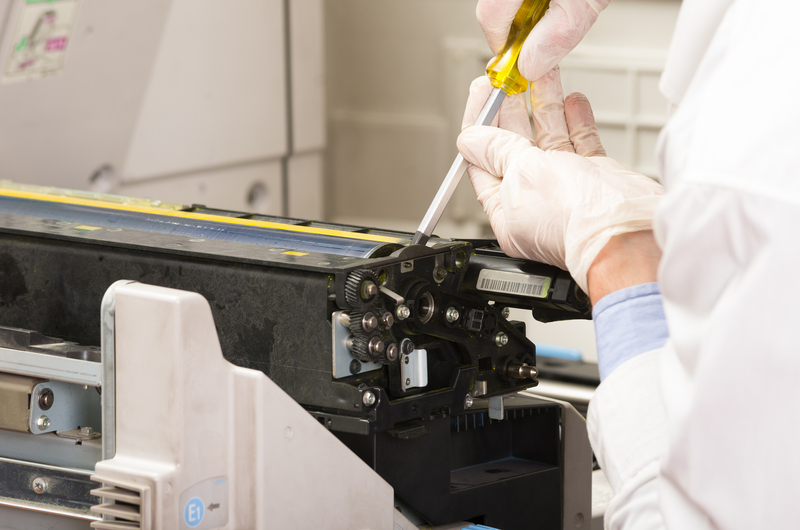Responsible Plant Pot Disposal Practices
Every passionate gardener and plant lover knows the thrill of bringing home a new plant. However, with every new addition comes plant pots--plastic, clay, ceramic, or even biodegradable options--that accumulate over time. Proper plant pot disposal is essential not just to keep your storage spaces uncluttered, but to reduce environmental impact and support sustainability. In this comprehensive guide, you'll learn all about responsible plant pot disposal practices, why they matter, and how you can make eco-friendly choices for your gardening journey.
Why Responsible Disposal of Plant Pots Matters
Many people overlook the aftermath of plant pot use, but millions of pots contribute to landfill waste each year. Here's why it's crucial to focus on eco-friendly plant pot disposal:
- Environmental Pollution: Many traditional plant pots are made of non-biodegradable plastics that take centuries to break down, polluting land and water.
- Resource Efficiency: Reusing or recycling pots conserves the raw materials and energy required to produce new ones.
- Community Health: Proper disposal prevents chemical leaching and the spread of pathogens from dirty pots.
- Sustainable Gardening: Aligning disposal methods with sustainability encourages responsible consumer choices and reduces our ecological footprint.
Now, let's delve into the various solutions and best practices for disposal of plant pots and how you can incorporate them into your daily life.

Types of Plant Pots and Their Environmental Impact
Before we discuss the disposal methods, it helps to recognize the types of plant pots and their respective effects on the environment:
- Plastic Pots: The most common type, plastic plant pots are lightweight and inexpensive, but most aren't curbside recyclable and can persist for centuries in landfills.
- Ceramic and Clay Pots: These are durable and attractive, but heavy and often break into non-recyclable pieces. However, they're reusable and sometimes upcyclable.
- Biodegradable Pots: Made from materials like coconut coir, peat, or compressed paper, they can break down naturally, but only in appropriate composting conditions.
- Terracotta Pots: While terracotta is a type of clay, its porous nature means it's often best reused or repurposed; broken pieces may degrade faster but aren't compostable.
By understanding the material of your pots, you can choose the most sustainable disposal method.
How to Dispose of Plastic Plant Pots Responsibly
Plastic remains the most challenging material for responsible plant pot disposal. Here are some of the best plastic plant pot recycling and disposal practices you can follow:
1. Check Local Recycling Programs
Many curbside recycling programs don't accept plastic pots due to their resin codes or contamination by soil and chemicals. However, several communities run specialized drop-off events for garden plastics. Contact your local waste management department or search their website for plant pot recycling details.
2. Retailer Takeback Initiatives
Large garden centers or nurseries often host plant pot return programs. These facilities usually accept clean, empty pots and sometimes even trays and carrying packs. Returned pots get sterilized, reused, or sent to dedicated recyclers.
3. Reuse or Repurpose
- Use for propagating seedlings, gifting plants, or organizing craft supplies.
- Cut larger pots into labels, scoops, or garden markers.
- Donate to schools, community gardens, or local plant swaps.
Reusing extends the life of the plastic, which is far more sustainable than disposal.
4. Clean Before Recycling
Remove all soil and plant matter before recycling or returning pots: dirty pots can contaminate recycling streams and make pots unsuitable for reuse.
Proper Disposal of Clay and Ceramic Pots
If you've accumulated old or broken ceramic and clay pots, consider these plant pot disposal solutions instead of throwing them in the trash:
- Reuse: Use intact pots for storing tools, organizing shed items, or as planters for new plants.
- Repurpose Broken Pieces: Broken ceramic and clay can be used as drainage material at the bottom of other pots, or as rustic stepping stones and mulch on garden paths.
- Art Projects: Ceramic shards are popular in mosaic art or as borders for garden beds.
- Landfill as Last Resort: Only discard in landfills when absolutely necessary. While clay and ceramic don't leach chemicals, they consume significant landfill space.
Biodegradable Plant Pots: Composting and Care
Biodegradable pots are crafted for easy, responsible disposal. However, their compostability depends on the type:
| Material | Compostability | Tips |
|---|---|---|
| Peat Pots | Compostable in home and municipal setups | Break into small pieces for faster decomposition |
| Coir (Coconut Fiber) | Slow to compost, but fully biodegradable | Soak and shred before composting |
| Compressed Paper Pulp | Compostable, especially in wet conditions | Combine with kitchen compost material |
| Bamboo Fiber | Can degrade in commercial composting | Check if your facility accepts them |
Always remove labeling stickers or synthetic coatings before composting, as these won't break down naturally.
Creative Ways to Repurpose Old Plant Pots
Repurposing is one of the most sustainable plant pot disposal practices. Below are imaginative ideas to breathe new life into old pots:
- Mini Storage: Store garden twine, markers, or seeds.
- Desk Organizers: Use small pots for pencils, scissors, or other tools.
- Outdoor Decor: Transform aged pots into garden sculptures, toadstools, or fairy garden features.
- Insect Hotels: Stack or fill pots with bamboo canes or pinecones for beneficial insects.
- Bird Feeders: Tie upside-down pots to trees to shelter birdseed from rain.
Think beyond planting--responsible plant pot disposal is about seeing potential in what others consider waste.
Community-Based Plant Pot Disposal Programs
Many cities and non-profits offer plant pot recycling programs as part of their commitment to green spaces and zero waste. Here's how you can take part or inspire a new initiative:
Join Local Drop-Offs
Community collection days are organized by garden centers or environmental organizations. Residents can bring used pots, and the group ensures proper sorting and recycling.
Organize a Pot Swap
Set up an event at a local park, community center, or garden. Invite residents to exchange their extra pots, fostering a culture of reuse and networking among gardeners.
Support or Start a Takeback Program
Encourage your favorite garden shop to launch a pot takeback scheme, where customers can return used containers for store reuse or bulk recycling.
Purchasing with Disposal in Mind
One of the most effective responsible plant pot disposal practices begins at purchase. Here's how to make mindful choices:
- Prefer biodegradable or recyclable pots from the outset.
- Buy from nurseries that use compostable or returnable packaging.
- Choose products labeled #2 (HDPE) or #5 (PP) plastics, which are easier to recycle.
- Opt for secondhand or upcycled pots at thrift stores, online marketplaces, or local swaps.
Supporting sustainable brands and local growers who value reuse helps create long-lasting change in plant pot production and disposal.

Frequently Asked Questions on Responsible Plant Pot Disposal
Can You Recycle All Plastic Plant Pots?
No, not all plastic pots are recyclable curbside. Check pots for recycling codes. Most black or dark-colored pots cannot be detected by recycling scanners and are best returned to participating nurseries or upcycled.
How Should I Clean Plant Pots Before Recycling or Reusing?
- Soak in a solution of one part bleach to nine parts water for ten minutes.
- Rinse thoroughly and dry before recycling or storing.
- This process also prevents the transfer of plant pathogens.
Are Biodegradable Pots Always Better?
While compostable and biodegradable pots reduce landfill waste, they're only effective if composted correctly. If sent to landfill, they may not break down due to anaerobic (oxygen-poor) conditions.
What About Terracotta Pots?
Terracotta is natural and porous, offering some eco-friendliness when reused. While not compostable, shattered terracotta adds mineral content to garden soil and can be creatively upcycled.
Tips for Sustainable Plant Pot Disposal and Gardening
- Buy only what you need: Over-purchasing leads to more waste down the line.
- Store pots neatly: Proper storage prevents breakage and makes pots easier to repurpose or pass on.
- Explore upcycling tutorials: From DIY planters to bird baths, countless online guides can spark creativity and extend pot life.
- Connect with local gardeners: Join social media groups or clubs where pots are often exchanged for free.
- Advocate for change: Ask your city council or favorite nurseries about implementing recycling or return initiatives.
Small, consistent actions magnify impact. Keep learning, sharing, and modeling the best responsible plant pot disposal practices possible.
Conclusion: Create a Greener Garden Routine
Being a responsible gardener means looking beyond the beauty of our plants and considering our ecological footprint every step of the way. With thoughtful plant pot disposal methods--from recycling and composting to creatively repurposing--you can reduce waste, protect the planet, and inspire others in your community to do the same.
Prioritize sustainable purchasing, take advantage of community programs, and never underestimate the value of a reused pot. Your choices today nurture a vibrant, healthy ecosystem for generations to come.
Start your journey toward responsible plant pot disposal practices--because every pot counts!